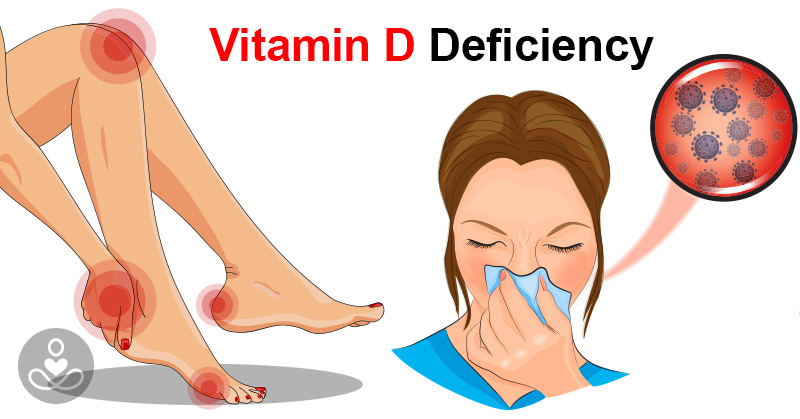Every vitamin plays an important role in our health. There is one, however, that seems to work overtime. It helps us to maintain healthy bones, regulates the growth of our body’s tissues, and strengthens our immune systems. This vitamin is readily available to us in our daily lives and yet almost 40% of North Americans have an undiagnosed deficiency [1]. That incredibly important molecule is Vitamin D.
What is Vitamin D?

Vitamin D is a fat-soluble vitamin. This means that your body absorbs it along with fats in your diet and stores it in your fatty tissues. It differs from other vitamins in two important ways:
- Your body produces it. Your kidneys produce vitamin D from cholesterol. In order to do this, however, your skin needs to receive adequate amounts of UV light through exposure to the sun. When the sun hits your skin it causes a chemical reaction that produces cholecalciferol. The liver converts it to calcidiol, and the kidneys convert that into calcitriol. Calcitriol is the active form of vitamin D in the body.
- It acts as a hormone. Every single cell in your body has a receptor for vitamin D. It produces its effects on the body by binding to these receptors [2].
The recommended daily intake (RDI) of vitamin D is four hundred international units (IU) for children up to one year old, and six hundred IU for people aged one to seventy. For people over seventy years old, the RDI is eight hundred IU [3].
We recommend HeartyBody’s Peppermint or Orange flavored Vitamin D3 & K2 for $25.00
Read More: This Vitamin Deficiency Can Mimic Symptoms of Dementia. Here’s What To Look Out For
Vitamin D Deficiency

It is very common for people to have low levels of vitamin D circulating in their blood. In 2011, one study found that 41.6 percent of American adults are deficient in the vitamin. That percentage jumps up to 69.2 percent for Hispanics and 82.1 percent for African Americans. The reason for this is that darker skin tones do not absorb as much vitamin D from the sun [1].
Some common risk factors for vitamin D deficiency include:
- Having dark skin.
- Being elderly.
- Being overweight or obese.
- Not eating much fish or dairy.
- Living far from the equator where there is little sun year-round.
- Always use sunscreen when going out.
- Staying indoors [4,5].
According to the Institute of Medicine, a vitamin D level under 20 ng/mL is considered a deficiency [6].
Signs that You May Be Deficient in Vitamin D

Because vitamin D performs so many functions in your body, a deficiency could manifest itself in multiple ways. Here are some common signs that you may not be getting enough of the vitamin:
1. You get sick Frequently

One of the main functions of vitamin D is strengthening your immune system so you don’t get sick. Several studies have shown a link between vitamin D deficiency and respiratory tract infections like colds, bronchitis, and pneumonia [7]. Additionally, studies have also shown that taking a vitamin D supplement can reduce your risk of upper respiratory tract infections [8]. If you struggle with multiple colds, flus, and other respiratory illnesses every year, consider talking to your doctor about getting tested for a vitamin D deficiency.
2. You’re Tired A Lot

Of course, fatigue can be a symptom of many different health problems, but vitamin D deficiency is among them. Studies have shown that having low levels of the vitamin in your blood can cause fatigue. In one of these studies, a young woman was complaining about constant daytime fatigue and headaches. Doctors gave her a vitamin D supplement after finding out she had only 5.9 ng/mL of the vitamin in her blood. Once she began taking the supplement, her symptoms went away [9].
3. You Experience Bone and Back Pain

Vitamin D helps keep your bones strong by improving your body’s ability to absorb calcium. Pain in your bones or in your lower back could be a sign that you don’t have enough vitamin D. Many observational studies have shown a relationship between deficiency and chronic lower back pain, including one that examined over nine thousand older women.
The researchers looked at the association between vitamin D status and lower back pain and found that those with a deficiency were more likely to experience pain in their lower back [10]. Another study found that people with a vitamin D deficiency were almost twice as likely to experience bone pain in their legs, ribs, or joints, compared to those with a healthy vitamin D status [11].
4. You’re Experiencing Depression

If you’re experiencing a depressed mood for no apparent reason, it could be because you are deficient in vitamin D. Results in clinical trials have been mixed, but observational studies have shown a link between low blood levels of vitamin D and depression. Some controlled studies have shown that supplementing individuals with a low vitamin D status can help improve depression [12].
Read More: Vitamin D Deficiency Causes Death, New Study Finds
5. Your skin isn’t healing well

There has not been much study on the effects of vitamin D and wound healing in people with a deficiency at this point, but there is some research to suggest that a deficiency may slow down healing. One test-tube study found that vitamin D increases the production of compounds that your body needs to form new skin. The authors of the study concluded that vitamin D supplementation may help improve wound healing in patients with a deficiency [13].
6. Your bones are getting weaker

Many older adults who experience bone loss immediately turn to calcium to solve the issue, but vitamin D may be even more important. Low bone mineral density occurs when your bones have lost calcium and other minerals. Vitamin D plays a crucial role in calcium absorption and bone metabolism.
One large observational study found that there was a strong link between low vitamin D levels and low bone density in middle-aged women [14]. Results from aggressive vitamin D supplementation and bone density are mixed, but having adequate blood levels of the vitamin are important for maintaining bone health.
7. Your hair is falling out

There has been some evidence to suggest that there is a link between low vitamin D status and hair loss, however to date, there is very little research on this topic. That being said, vitamin D deficiency can cause rickets in children. Rickets can then cause alopecia areata, which is characterized by severe hair loss [15].
8. Your muscles ache

One study found that 71 percent of participants who were experiencing chronic muscle pain were deficient in vitamin D. This is because the vitamin D receptor is present in nerve cells that detect pain [16]. If you are experiencing chronic muscle aches or pains, consider asking your doctor to look at your vitamin D status.
Winter and Vitamin D

If you’ve ever experienced the “winter blues”, it may have to do with your vitamin D status. This is known as Seasonal Affective Disorder (SAD). If you live in the northern hemisphere, there are many months of the year when it is very difficult to get enough sun exposure for your body to synthesize vitamin D. This can make you feel depressed [17].
It turns out, however, that what you do in the summer can actually have a significant impact on your vitamin D status as the days get shorter and the sunlight disappears. Dr. Timo Partonen and his colleagues at the University of Helsinki’s National Public Health Institute in Finland say you can build up your vitamin D status in the summer to last you into the fall. They give the following recommendations:
- Dose up: Get up and out early to enjoy the added hours of morning sunlight. These are also the hours in which the risk of sunburn is lowest. (Avoid dozing during the midday sun.)
- Ritual: Practice some form of ritual, meditation, or exercise outdoors for at least 20 minutes each morning. One practice is to face the sun and imagine you are inhaling its light with each in-breath, and that the light is being absorbed throughout your body.
- Sun breaks: During your workday, spend coffee breaks or lunch breaks outdoors to increase your exposure each day [18].
Other Ways to Increase Your Vitamin D Levels

Getting enough sunshine year-round when you live in colder climates is difficult. Luckily, there are other ways you can ensure that you’re getting enough vitamin
1. Take the correct amount of Vitamin D supplement

If you are deficient, supplementing with 2000 – 5000 IU of Vitamin D3 daily for 3 months (under a doctor’s supervision) is a good way to increase your levels. Once they have reached the optimal range, taking a maintenance dose of 1000 – 2000 IU daily is a good idea. Those people who live in northern climates (spend more time indoors) may need to take higher doses. Please ensure you are being supervised by a doctor when started and maintaining supplementation [19].
We recommend HeartyBody’s Peppermint or Orange flavored Vitamin D3 & K2 for $25.00
2. Eat Dietary sources of Vitamin D which include the following:

- Fish Liver Oils (Cod Liver Oil) – 1 tsp contains 452 IU of Vitamin D
- Canned Sockeye Salmon – 3 oz contains 716 IU
- Cooked Rainbow Trout – 3 oz contains 648 IU
- Yogurt – 8 oz contains 80-120 IU
- Mushrooms – ½ cup contains 56-68 IU
- Egg – 1 large contains 44 IU [20]
Talk With Your Doctor

Because vitamin D can be stored in your body, it is possible to take too much if you are supplementing. If you think you might be deficient in the vitamin, talk to your doctor. They will be able to test your blood to find out if you are deficient and determine what is the best dose for you.
Read More: The Link Between Vitamin D and Belly Fat

- https://pubmed.ncbi.nlm.nih.gov/21310306/
- https://www.hormone.org/your-health-and-hormones/glands-and-hormones-a-to-z/hormones/vitamin-d#:~:text=Vitamin%20D%20is%20a%20hormone,D%20levels%20in%20the%20blood.
- https://www.mayoclinic.org/drugs-supplements-vitamin-d/art-20363792#:~:text=The%20recommended%20daily%20amount%20of,for%20people%20over%2070%20years.
- https://www.ncbi.nlm.nih.gov/pmc/articles/PMC6075634/
- https://www.mayoclinic.org/healthy-lifestyle/nutrition-and-healthy-eating/expert-answers/vitamin-d-deficiency/faq-20058397
- https://www.health.harvard.edu/blog/vitamin-d-whats-right-level-2016121910893
- https://pubmed.ncbi.nlm.nih.gov/24766747/
- https://www.ncbi.nlm.nih.gov/pmc/articles/PMC3686844/
- https://pubmed.ncbi.nlm.nih.gov/21206551/
- https://pubmed.ncbi.nlm.nih.gov/23758943/
- https://pubmed.ncbi.nlm.nih.gov/21199469/
- https://pubmed.ncbi.nlm.nih.gov/19616172/
- https://pubmed.ncbi.nlm.nih.gov/27222384/
- https://www.healthline.com/nutrition/vitamin-d-deficiency-symptoms#TOC_TITLE_HDR_7
- https://pubmed.ncbi.nlm.nih.gov/21693169/
- https://pubmed.ncbi.nlm.nih.gov/24730754/
- https://www.ncbi.nlm.nih.gov/pmc/articles/PMC2908269/
- https://www.webmd.com/depression/features/summer-sun-winter-blues#2
- https://www.ncbi.nlm.nih.gov/pmc/articles/PMC2835491/
- https://health.gov/our-work/food-nutrition/2015-2020-dietary-guidelines/guidelines/appendix-12/

